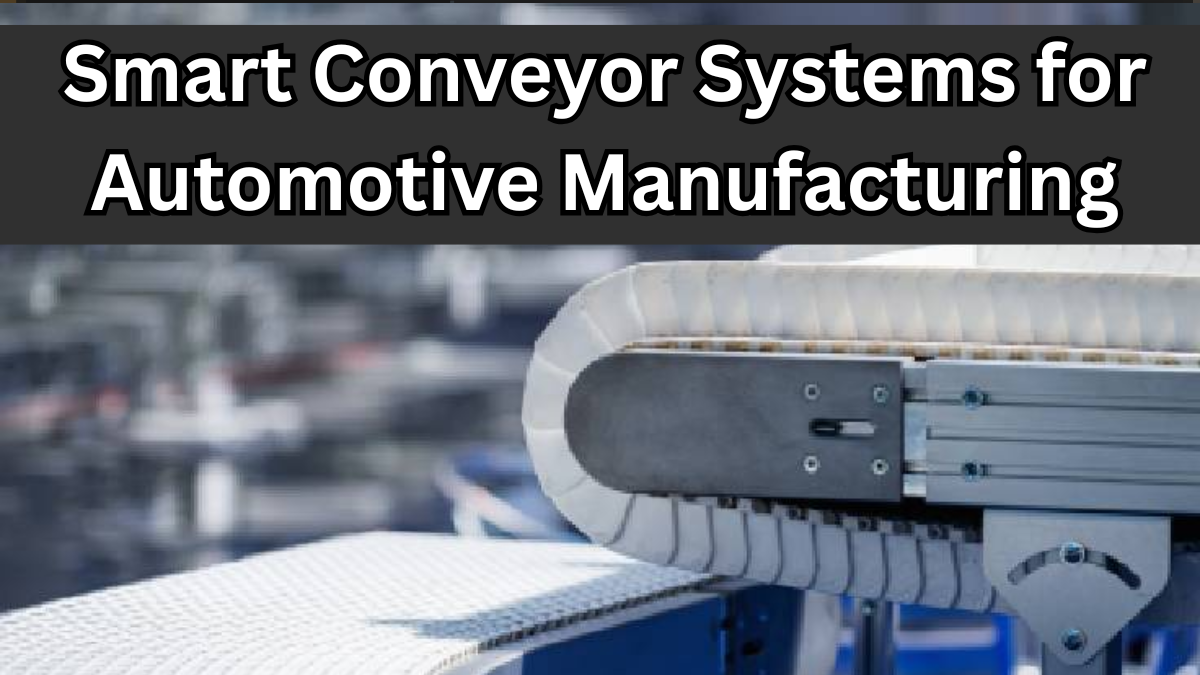In today’s fast-paced automotive industry, speed and precision aren’t just desirable—they’re essential. At the heart of this transformation lies an innovation quietly powering factory floors across India: Smart Conveyor Systems in Auto Factories.
RBR Technologies, a leader in industrial automation, has been at the forefront of integrating smart manufacturing mobility into conveyor systems to streamline production, enhance efficiency, and support Industry 4.0 goals.

Why Smart Conveyor Systems Matter More Than Ever
Traditional conveyors served a simple purpose—move parts from one point to another. But smart systems go beyond transportation. They are data-driven, intelligent, and flexible.
Key Benefits:
-
Automated decision-making: Detects faults, reroutes components automatically
-
Supports custom assembly lines: Ideal for varied car models or variants
-
Real-time diagnostics: Predicts maintenance before breakdowns happen
-
Boosts productivity: Less downtime and smoother workflows
How RBR is Shaping the Future of Auto Manufacturing
RBR’s smart conveyor systems are tailored for today’s smart manufacturing mobility trends. Whether it’s a large OEM factory or a tier-2 component supplier, these systems adapt to different workflows with ease.
RBR Conveyor System Features
| Feature | Description |
|---|---|
| Modular Design | Easily extend or reconfigure layout as per production needs |
| Integrated Sensors | Real-time part tracking and fault detection |
| IoT-Enabled Monitoring | Remote diagnostics, energy monitoring, and predictive maintenance |
| Adaptive Speed Control | Adjusts based on load or congestion in real time |
| Cross-Platform Integration | Syncs with MES, ERP, and robotics for seamless automation |
Applications Across Auto Factories
From body shops to final assembly, Smart Conveyor Systems in Auto Factories bring adaptability and intelligence to each stage.
Assembly Line Automation
-
Enables sequencing of different models on the same line
-
Integrates with robotic arms for efficient hand-offs
Parts Handling
-
Ensures just-in-time delivery of components to specific workstations
-
Reduces material wastage and logistic errors
Quality Control
-
Uses embedded vision systems and sensors for inspection and sorting
Driving the Shift Towards Smart Manufacturing Mobility
With rising EV adoption, complexity in variants, and the need for rapid scaling, smart manufacturing mobility is no longer optional. RBR’s conveyor systems are paving the way for a more agile, responsive, and connected automotive production environment.
Why Indian Auto Factories Trust RBR
Customer Case Study Snapshot:
| Factory Type | RBR Impact |
|---|---|
| EV Plant in Pune | 40% reduction in idle time through dynamic conveyor routing |
| Tier-1 Supplier, Chennai | Achieved 30% faster assembly through intelligent parts sequencing |
| OEM Unit, Manesar | Improved maintenance forecasting using IoT-integrated conveyors |
Looking Ahead: The Future is Moving Smarter
Smart conveyor systems are not just a technology upgrade—they are a strategic investment in the future of auto manufacturing. As the demand for customization, quality, and speed increases, the combination of automation and mobility will define competitive advantage.
FAQs
1. What are Smart Conveyor Systems in Auto Factories?
Smart conveyor systems are advanced, sensor-driven transport systems that automate and optimize the movement of parts in automotive plants, improving speed, accuracy, and efficiency.
2. How do these systems support smart manufacturing mobility?
They offer flexibility, data connectivity, and real-time adaptability, aligning with the principles of smart manufacturing mobility—automation, intelligence, and integration.
3. Can they be integrated into existing production lines?
Yes, RBR’s modular systems are designed for easy retrofitting and scaling, making them ideal for both legacy and new plants.
4. What ROI can manufacturers expect?
Most clients report productivity gains of 25–40%, reduced downtime, and improved maintenance efficiency within 6–12 months of deployment.
Click here to learn more
